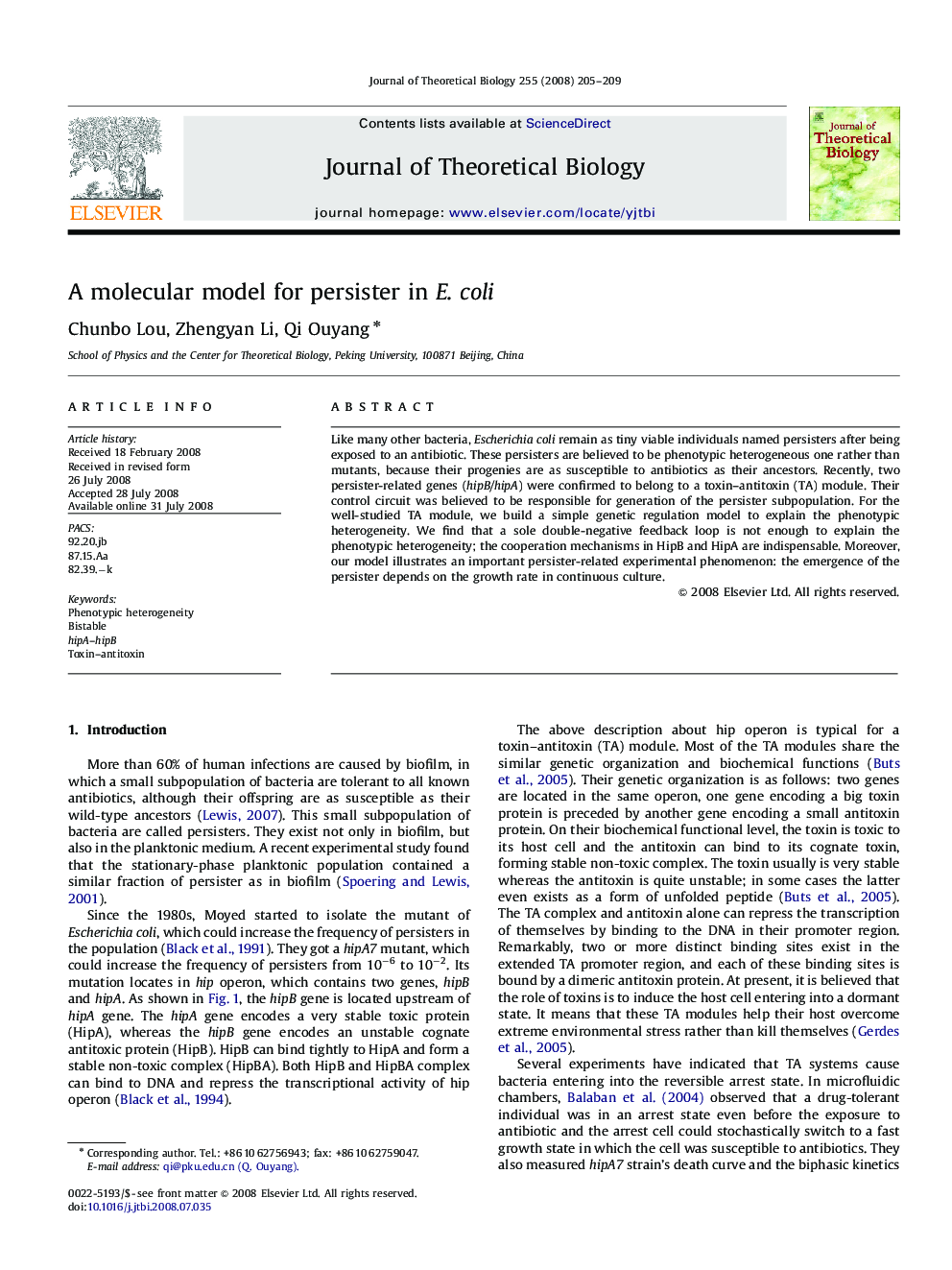| Article ID | Journal | Published Year | Pages | File Type |
|---|---|---|---|---|
| 4498236 | Journal of Theoretical Biology | 2008 | 5 Pages |
Like many other bacteria, Escherichia coli remain as tiny viable individuals named persisters after being exposed to an antibiotic. These persisters are believed to be phenotypic heterogeneous one rather than mutants, because their progenies are as susceptible to antibiotics as their ancestors. Recently, two persister-related genes (hipB/hipA) were confirmed to belong to a toxin–antitoxin (TA) module. Their control circuit was believed to be responsible for generation of the persister subpopulation. For the well-studied TA module, we build a simple genetic regulation model to explain the phenotypic heterogeneity. We find that a sole double-negative feedback loop is not enough to explain the phenotypic heterogeneity; the cooperation mechanisms in HipB and HipA are indispensable. Moreover, our model illustrates an important persister-related experimental phenomenon: the emergence of the persister depends on the growth rate in continuous culture.
